By Will Seagers
As I have pointed out in prior blogs, gay life was really unbelievable in the 1970s. This was particularly so in the cities of New York, Los Angeles, San Francisco and many others.
Bath houses and bars with their notorious "back rooms" were all the rage across the country. A sexual society had developed over that decade. I know for myself as a steward for a major airline, any "port of call" would have a Club Baths there and that would be pretty much a guaranteed good time. That chain was spread out all across the country... much to my pleasure. I will never forget an escapade I had in Miami. Towel-clad as usual, I was wandering the mostly outdoor and tropical grounds when I heard a voice softly call out my name. I turned around to find a childhood bestie that I had not seen in decades. He and his mother had moved from N.J. where we met and were pre-teen play pals. I had always had my suspicions about this "buddy" even though nothing had ever happened back then or that night.
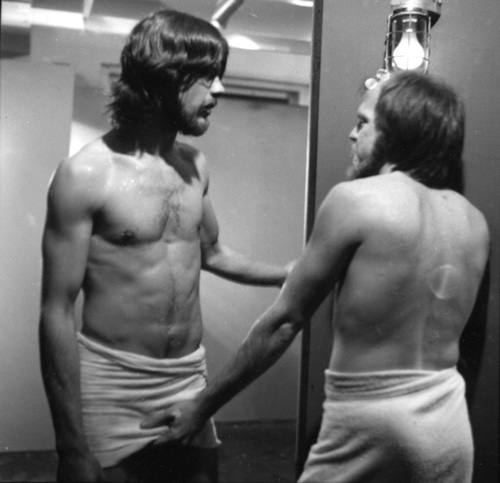
Men in a bath house from Drive (1974)
Fast forward to the later part of the 70s when I moved to San Francisco. Besides the legendary baths like The Barracks, The Brothel and many many more, the Club Baths of S.F. was just two blocks from my South of Market apartment! My partner and I had a very open sexual relationship. We both loved to go "down the block" as we called it! For most of our years together we both had night time jobs. Most of the people that worked the bars and clubs that closed at 2AM would head down to 8th and Howard (the location for Club Baths S.F.) to "unwind" after work. There was sort of a social scene that had developed over the years. The big event, however, was on Tuesday nights when they had very discounted rates. There were literally lines around the block to get in. Once you got in, you quickly realized it was worth the wait! It was like being on a porn set. Being familiar with that... it sure felt like home to me! Lol.
Similarly, NYC had its bath house smorgasbord, too! Two of my favorite were the St. Mark's and the Continental Baths. The St. Mark's was one of the older facilities in town and well attended in the hours after the bars and clubs around town had shut for the night.
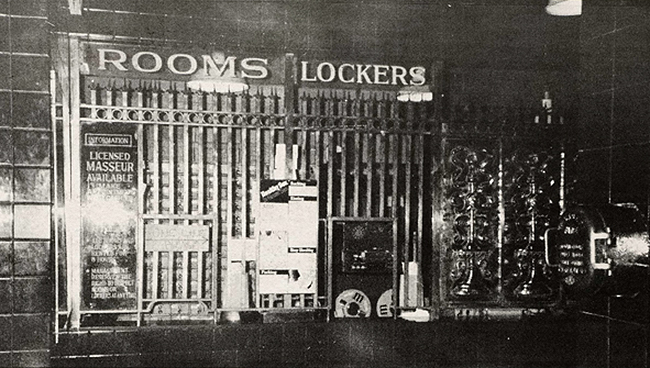 St. Mark's Baths interior
St. Mark's Baths interior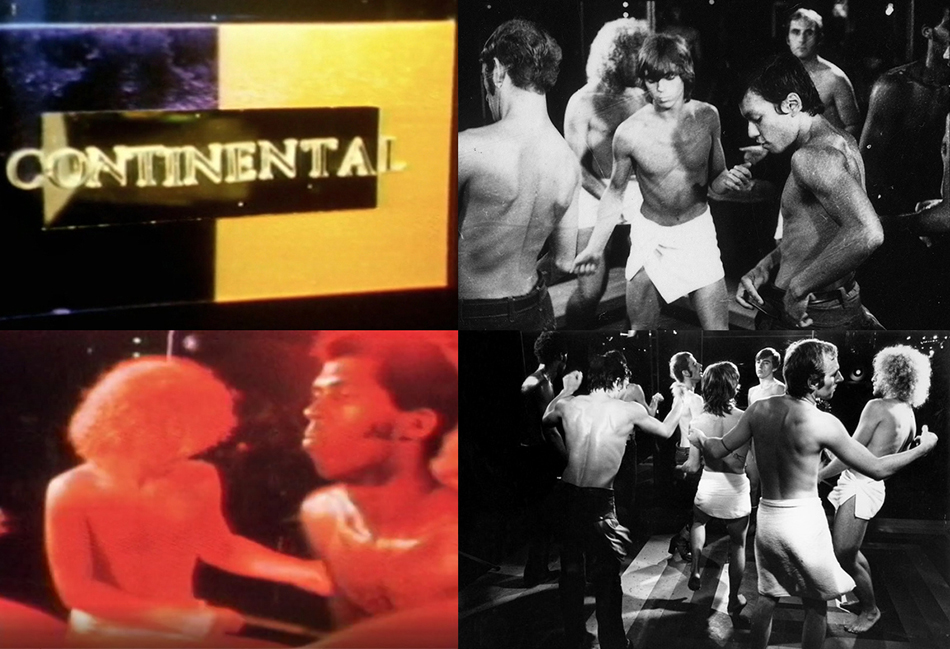
Continental interior sign and men dancing from Jack (1973)
For me, I would sometimes make a whole night of it there and skip the clubs and bars! Oink!

All of this came to an abrupt end. A scourge had hit the gay communities around the country. It was both frightening and sad to be losing friends and family to a disease that no one understood at the time. Almost immediately, openly sexual venues were forced to close. It sent a shockwave through the community. Being undaunted, a lot of the community went to "monitored" sex clubs. While visiting a friend in NYC, we went to one of these venues. I was surprised at how packed it was... given that people remained mostly clothed. There were actual monitors that wandered through the crowd admonishing and extracting individuals that went beyond the basic (hand-job) tolerated behaviors. "Lips above the Hips" was the chant that could be heard from these monitors as they walked the floor. For some people this might have worked. But, for me it was like the fast-food version of sex! It left me hungry.
It was at this time I noticed that porn was really taking off again. The industry literally exploded. After all, what could be safer than being a voyeur in the comfort of your own home? And, that was true again when COVID reared its ugly head just recently. Not only condoms but masks were featured in porn - ostensibly to set a good example. The almighty sexual drive of my fellow man was not to be daunted!
So, at nearly 72, I have seen the "Lavender Wave" rise from seemingly nowhere during the years of the sexual revolution. I have participated in it myself with great memories of the freedom I felt. The great cosmic pendulum swung back. I am now seeing the adjustments. But, Men being Men - there will always be a feast ahead.
Bio of Will Seagers:
Will Seagers (also credited as Matt Harper), within his multifaceted career and participation in numerous gay communities across the country in the '70s and '80s and beyond, worked as a print model and film performer. He made iconic appearances in releases from Falcon, Hand in Hand, Joe Gage, Target (Bullet), J. Brian, Steve Scott, and more, including in lead roles in major classics like Gage's L.A. Tool & Die (1979) and Scott's Wanted (1980). He brought strong screen presence and exceptional acting to his roles and was scene partners with many fellow legends of classic porn.

You can read Will Seagers' previous blogs for Bijou here:
Welcome Matt/Will
What's For Dessert?
On and Off the Set of L.A. Tool & Die
Wanted, Weekend Lockup and Weekends in Hermosa Beach
Honeymoon in the Palms
Birds of a Feather
The Stereo Maven of Castro Street
The Pass Around Boy
The Ecstasy and the Agony
Fitness and Fantasy: The Early Gyms
Chasing the Boys and Chasing the Sun: My Story of Sun Worship and Where It Got Me
Becoming Invisible
The Reverse Story of Dorian Gray
Pin Money
One Organ Leads to Another! Part 1
The Wheels of Steel



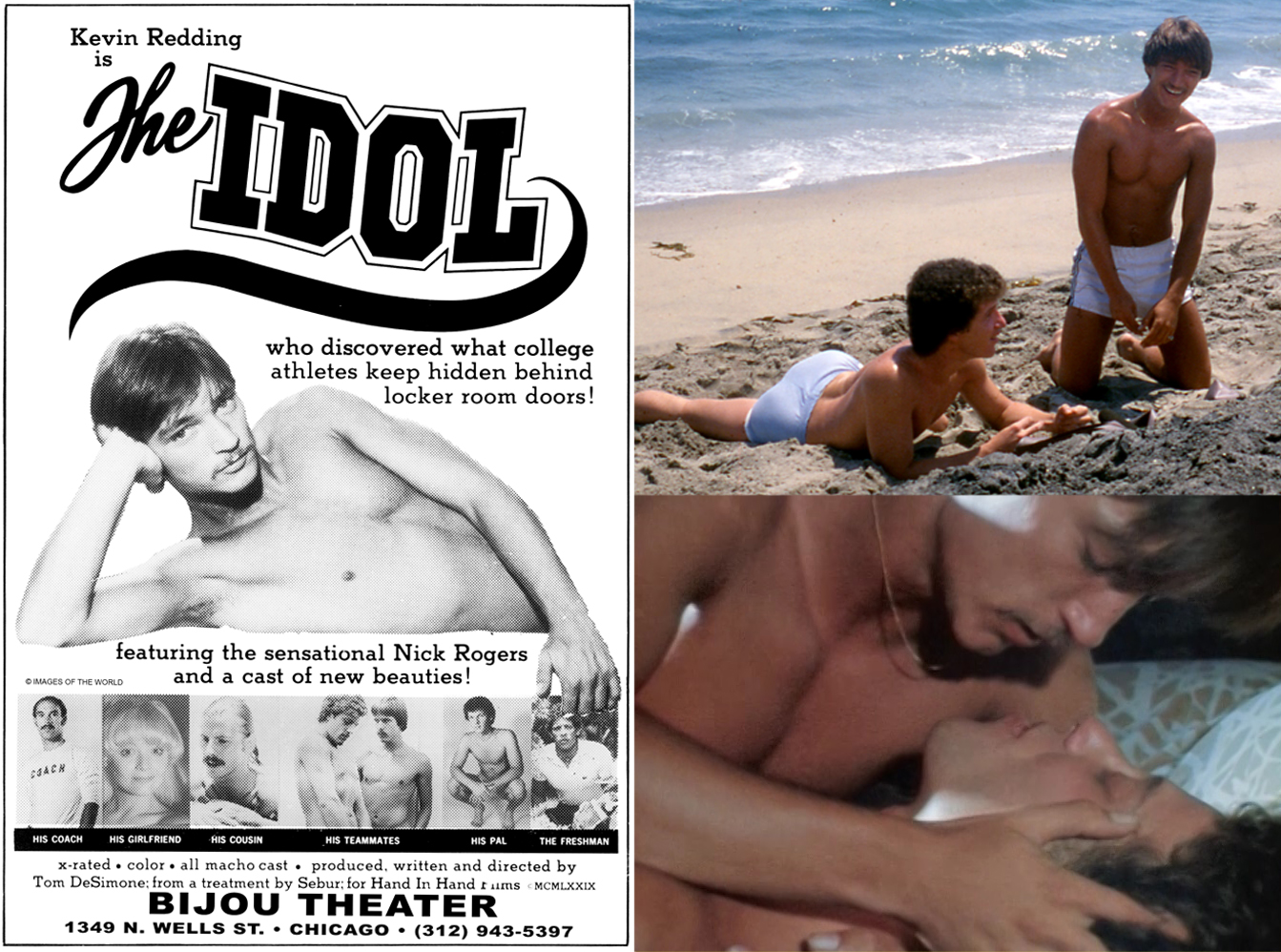
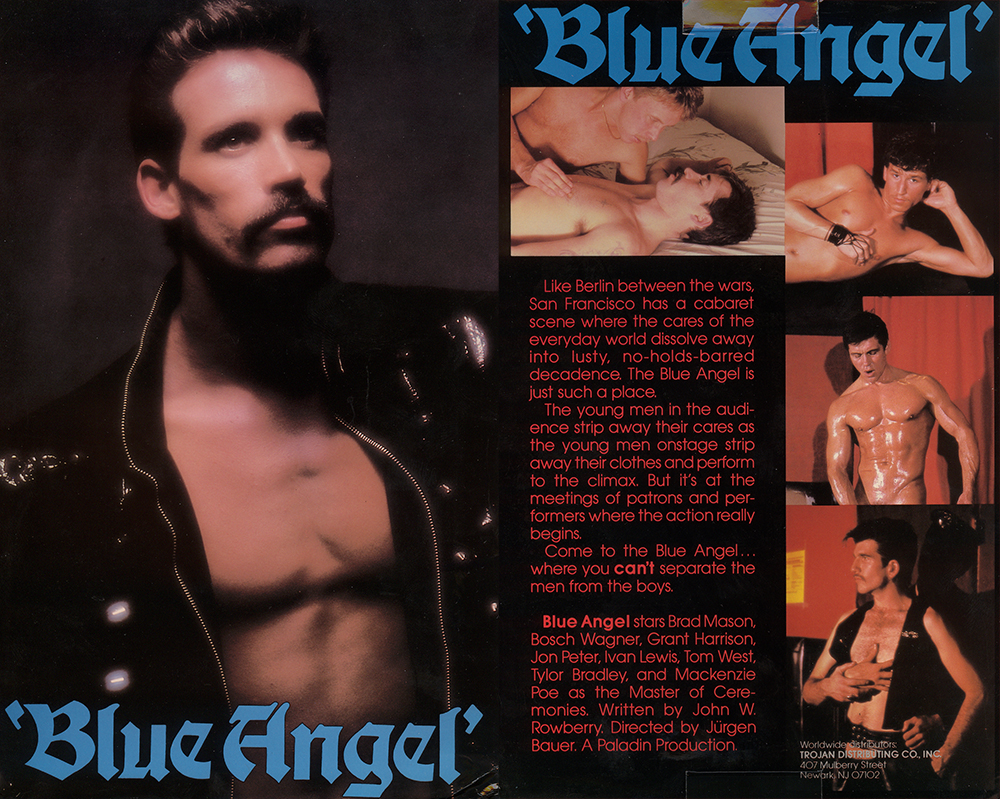
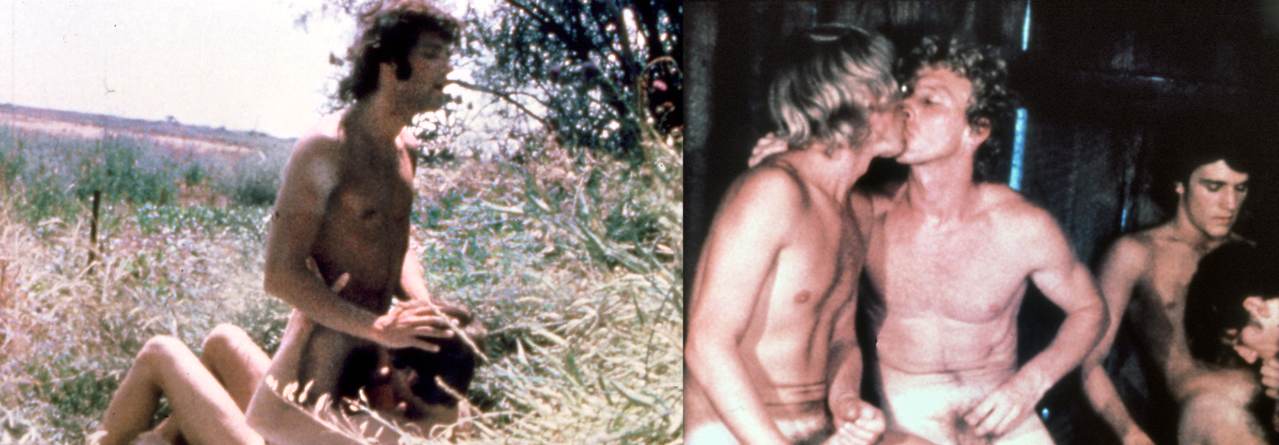
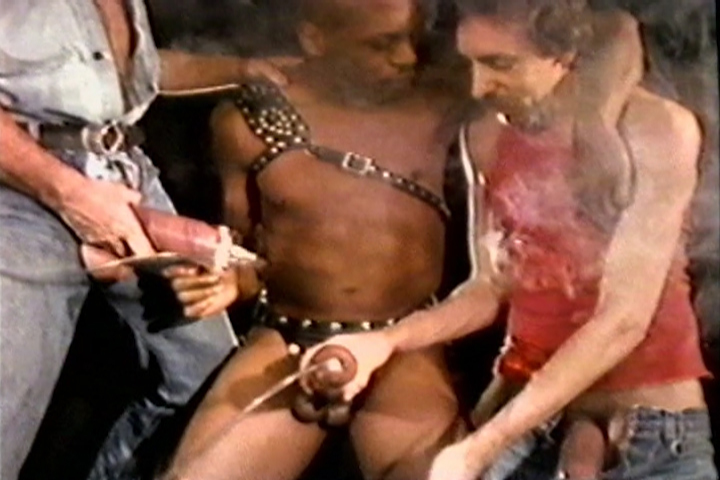
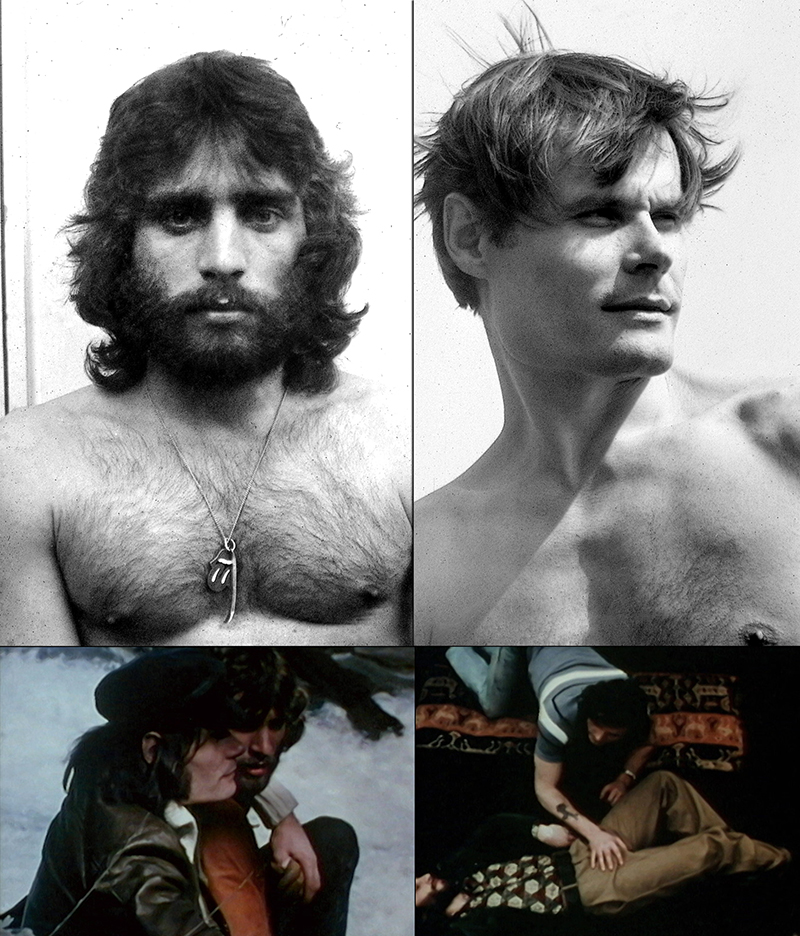
 Join our Email List
Join our Email List Like Us on Facebook
Like Us on Facebook Instagram
Instagram Youtube
Youtube Follow Us on Twitter
Follow Us on Twitter Follow us on Pinterest
Follow us on Pinterest